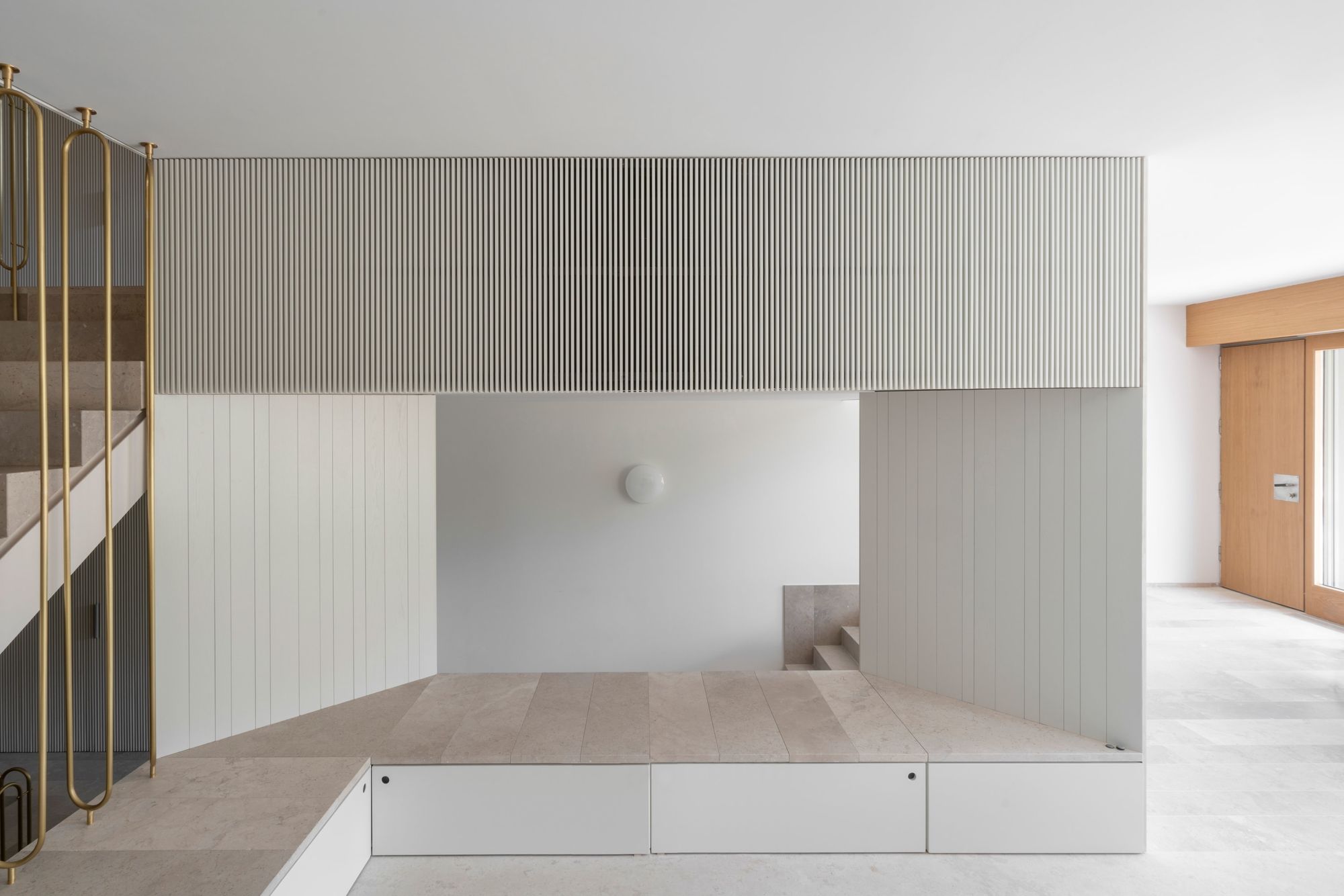HOUSE No.1 is a minimal residence located in Madrid, Spain, designed by PACHÓN—PAREDES. Incapsulare is the transformation, refurbishment and adaptation of the interior, exterior and in-between spaces of a dark and compartmentalised 1978 house. The new configuration responds to the needs of its users, who were looking for a space to live, work, play sports and enjoy both as a family and individually. In the proposal neutral spaces are used to adapt to genealogical changes and their spatial consequences. The house, with 3 floors + attic, fits a rectangle of 16m x 9m, which is distorted by patios, terraces and balconies. Each level is divided longitudinally into two bays of 3.5m and 5.5m, with a difference in height of 86cm. The goal is to transform a highly compartmentalized and dark space into an open and light-filled space, where the staircase, which was a spatial and lighting obstacle, becomes an essential heterogeneous space.
In the short axis, the typical partition walls to separate the 86cm difference in height are replaced by “L” shaped elements, that act as an extension of the staircase itself, and level the height difference. At the same time, these elements contain the structure, the storage systems and create interior windows, which in turn allow privacy regulation between spaces, becoming scenographies where users are both protagonists and spectators. In the long axis, the proposal connects both facades, laying out the uses in sequence, improving ventilation and simplifying horizontal communication, while unfolding as a 16-meter-long continuous piece of furniture that is a domestic infrastructure: containing storage, art-display, facilities/fixtures and furnishing. The 86cm intra-level separation highlights the movement and “public” use of the staircase, and becomes a useful space: steps, shelves, benches, etc. In parallel, the user can move vertically in a more “private” way by means of the hidden lift, thus guaranteeing accessibility on all levels.
The aim is to give the new spaces as much light, clarity and neutrality as possible. Materials are chosen to multiply, filter and regulate the warmth of light. Thus, framing a neutral canvas, which the inhabitants and their objects fill with colour. The staircase, the heart of the dwelling and the backbone of the spaces, is configured with solid steps made of campaspero stone that contrasts with the light brass handrail. This handrail is the result of a geometric study and reinterpretation of the existing handrails on the outside of the dwelling and in other modern and post-modern architecture in the surrounding neighbourhoods. The floorplan, as an extension of the staircase, is built entirely with the same materials, albeit with 4 different layouts, giving it dynamism, texture and ease of execution.
Photography by Luis Asin









